The shameful War against
Wolves in Sweden and Scandinavia
Questionable and
partly biased background information concerning the present wolf slaughter in
Sweden 2022,
by Eva Stjernswärd
Painter
artist
Board member of NGO
Jaktkritikerna (Hunting Critics) and Dris (Animal’s Voice in Society) against
licensed hunting in Sweden.
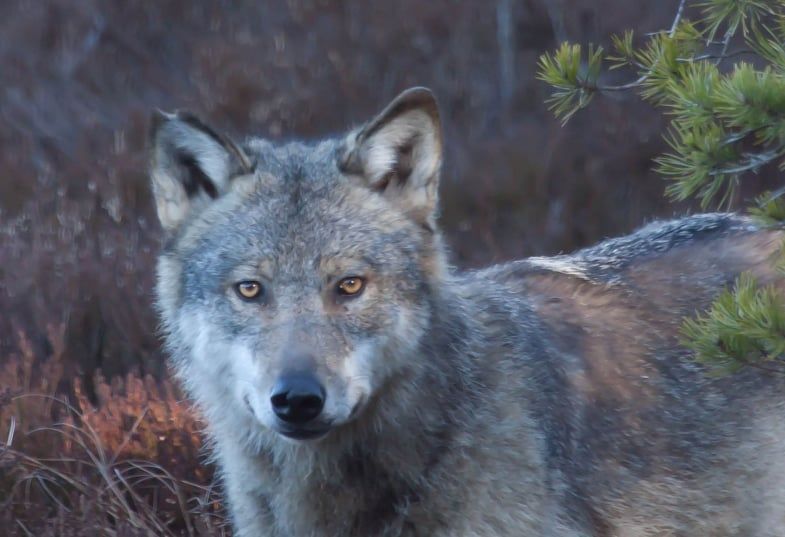
KA
The current hunt in 2022 is more cruel than usual as the different
local County Boards are cooperating to eradicate whole wolf families from their
territory and habitat. Norway (A non EU-country where the hunt for 54 wolves
can go on until 31st of May) and Sweden are cooperating with each
other in this grotesque extermination, creating a wolf holocaust. On the
Swedish side nearly 2 000 hunters have registered to kill 27 wolves.
Finland will also started a hunt for 18 wolves on February 1st. So in Scandinavia more than 99
wolves will be slaughtered in the most gruesome ways in 2022.
Wolves and other predators were almost eradicated because of human
persecution toward the end of the 19th century. In the early part of
the 1900’s, the romanticism of nature as well as people moving in to urban
areas helped to awaken an appreciation of a diverse fauna. Even the hunter’s association
helped to protect certain species. But unfortunately in the late 1930’s the
hunters association was nominated by the state to be responsible for wild life
management and they were granted huge economic resources, which coupled the
state and hunting interests, copied from a model then being utilized in
authoritarian Germany. This model is still valid and renders them a budget of
approximately 5.6 million dollars each year. This has created an institution that
exerts control over wild life as well as being a lobbying force infiltrating
the government and the political agenda for hunting on all levels. This is despite hunters only representing
less than 3 % of the population.
Why is there trophy hunting in
a developed country like Sweden?
Wolves were completely
protected from 1966 to save the species. But as we can see this has changed in
spite of being under the EU protection laws when Sweden agreed to enter the EU
in 1995. As from 2010 licensed hunting has escalated trophy hunting in Sweden,
as hunters can now kill bears, lynxes and wolves. Foreign hunters are welcomed
too. The Swedish Environmental Protection Agency changed its strategy of wild
life management in favor of hunters after a string of political changes from
the end of the 1990’s. This escalated when hunters decided that predators,
especially wolves, should be viewed as competitors for other game that they
were hunting! This had a negative impact on all wild animals, but for predators
in particular, as they were politicized.
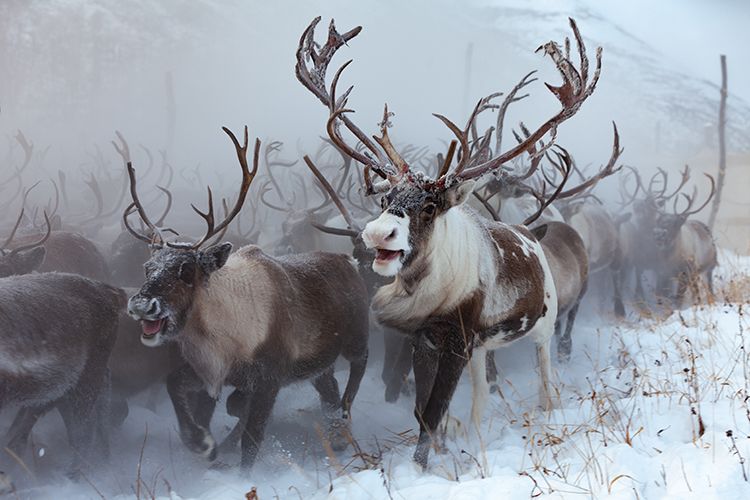
very unlike its cultural heritage and is now an industry with export ambitions. Not to mention the
extreme cruelty with which farmers are allowed to handle reindeers (Not as Nature intended – A book by
undercover journalist Rich Hardy). These semi-wild animals are transported to
slaughter houses in masses. Snowmobiles and helicopters are used to round the
animals up under stressful conditions. Although climate change is more of a
threat than predators, enormous financial support from the state keeps this
cruel business alive.
There is huge
financial support to reindeer owners/villages from the state to “accept” the
presence of predators in their land, as well as payment for each of their animals
taken by predators. However, this in no way protects the predators from
ultimately being killed. On the contrary; this has been proven by the increase
in so called protective hunting as well as illegal hunting. For wolves, this is
a lethal problem in additional ways; as the only path to genetic renewal actually
comes from Finland and Russia. No wolves survive if they enter Sweden. The hate
of wolves has become pathological when not even “stately bribes” can save them.
In some regions it’s like a reminder of the witch hunts that took place against
women in the seventeenth century.
The debate about the
degeneration in Swedish wolves has been unsuccessful in achieving any more
protection for them than other than token numbers.
In 2016 the Supreme
Administrative Court ruled that 300 wolves must be the minimum for conservation
of the species. Instead of this being a minimum - it is used as a maximum of
tolerance by the EPA and the hunters. Biological and scientific proof does not
help. The legal system is basing its judgement on this, which in general leave
the NGO’s appeal with hardly any success in saving individuals. The European
Commission has an open case against Sweden’s wolf hunt but nothing concrete has
been achieved yet.
Sweden’s repetitive
violation of the EU’s Habitats Directive continues and by customizing its own
national loop holes and interpretation of the exception rules for limited
hunting, Sweden is also undermining the aim and purpose of the Convention on
International Trade in Endangered Species, CITES, as export permits for all
trophies is easily granted by the Agricultural Board. On this note, its worth
mentioning that Swedish government refused to take up the ban on import of
trophies from canned lion hunts in 2016/2017, which would have been a low
hanging fruit. Unfortunately it shows that most politicians in all parties are
not at all engaged when it comes to animal protection, and definitely when
hunting is concerned.
Despite the Covid
pandemic the mink industry and industrial farming of pigs and chickens prevails
in horrible conditions in Sweden.
More than 7 000 red
listed predators have been killed in 20 years
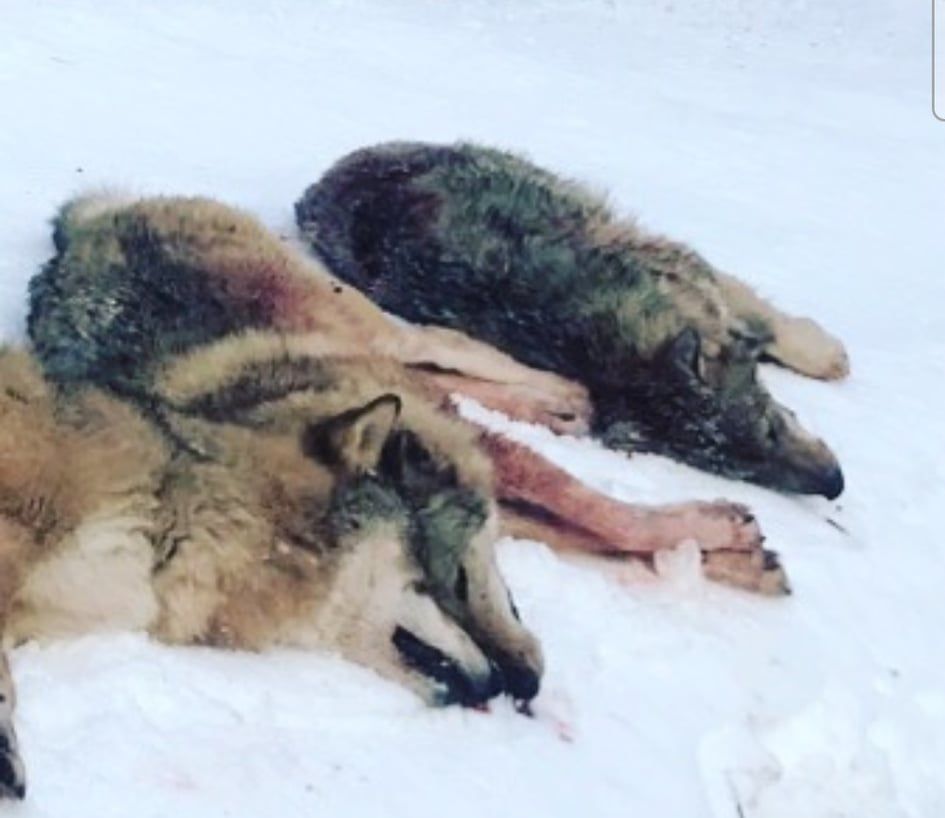
K.A.
The Swedish
Environmental Protection Agency (EPA), Naturvårdsverket,
has even increased the quota for legal trophy hunting. Since the year 2000 more
than 7 000 brown bears, lynxes, wolves and wolverines have been killed
legally in this system.
have an estimated 2 800 brown bears, not much over 1 000 lynxes and perhaps
600 wolverines. This is in a country with a low density of people in the areas
where predators naturally have their habitats. But predators have become chess
pieces on the political agenda. This polarization is based on predator conflicts
locally by hunters, livestock owners, reindeer keepers and of course the economic
interest groups behind them.
The system of
monitoring and counting wolves is done by local authorities and hunters. As the
wolf is considered not only to be a threat to livestock but as a competitor in
the hunter’s quest for wild game – it’s easy to conclude that the hunters want
to demonstrate as high a count of predators as possible.
In addition, humans
are diminishing predator’s territory in general, with exploitation of land for
livestock, especially the huge areas in northern Sweden where reindeers are
kept roaming free.
Wolf population
The number of wolves
is always debated and questioned as illegal hunting still counts for 10-20 %. When
the counting of individuals is done (1st October to 1st
March) these wolves as well as the animals killed in accidents or for other
reasons (killed in livestock conflicts for example) after this date, are not
accounted for. This means that wolves killed after 1st March and
until the following autumn, that is several months after, when the hunting decisions
are being made are not included! Some believe that there could therefore be
even less than 300 wolves.
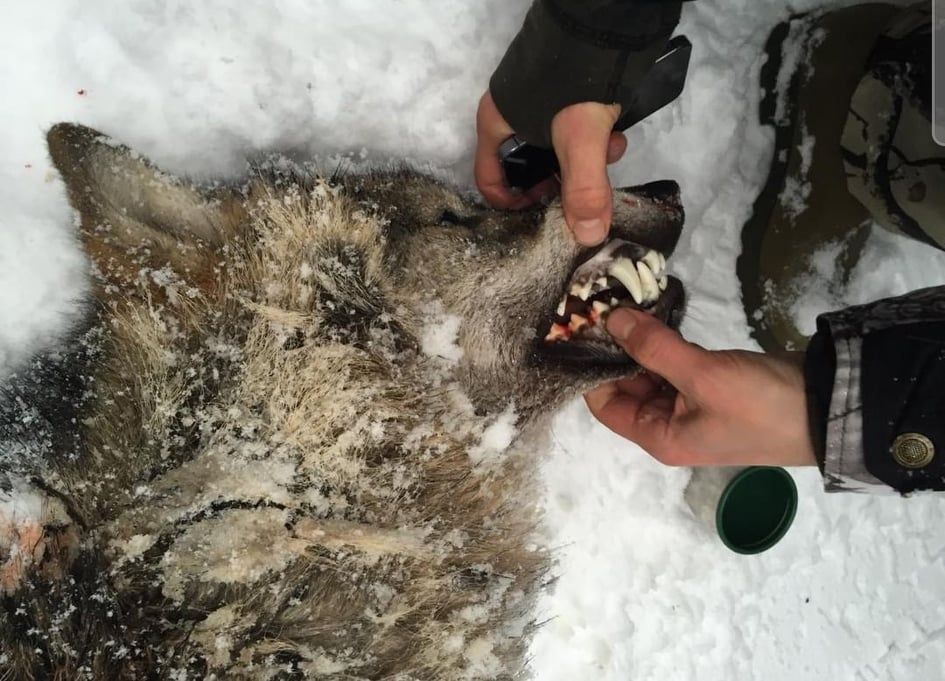
K.A.
The “precautionary principle” is not a Swedish forte
When it concerns
bears, wolves and lynxes, the “precautionary principle” is largely ignored.
The official number given
was 395 wolves when the authorities took the decisions to kill 27 to 33 of them
in 2022. Some local counties are even trying to extend the areas to be sure to
kill wolves that are trying to flee. This is what can happen on the border to
Norway (involving administrative boards in Dalarna, Värmland and Jämtland) and
it is repeatedly happening in the county of Gävleborg. Legally it should not be
allowed to change or extend hunting areas that were initially drawn up when the
decisions was made, in November/December. But the local administrative boards
of the mentioned regions above – are hard liners against predators, as are all
the northern regions. We do not know yet what the courts will say.
alarming - is the inbreeding and degeneration in Swedish wolves.
Many male wolves have
only one testicle (cryptorchidism) and autopsies of killed wolves show cruel
proof of hunters sadism – many have old wounds and lead ammunition in their
bodies.
killed against the EU directives for protection of species. Labeled
license hunting and/or protective hunting
Both methods have increased since 2010. The
Swedish Environmental Protection Agency has delegated the decisions to local
government boards in each county that houses predators. The protective hunting
orders are often given over the phone and mostly the animals are permitted to be
killed the same day. The time to challenge the decisions by NGO’s is therefore futile
and purely symbolic. These hunts are fast executions done by helicopter and snowmobile.
On the ground dogs are utilized to track them down if they try to hide in dens.
The heli-hunts might be inspired from American war-fare…and also what is
happening now in the US. Sadly these methods spread like a pandemic due to
globalization and hunters’ international organizations. Historically, Americans
started shooting African game from trains and cars in the era of the white hunters, also the time of the
Swedish baron Blixen (husband of author Karen Blixen) who guided all the rich
and famous on trophy hunting and killing tours in Africa.
So cruelty still takes
its toll in Sweden. Females with young are not spared. For example wolverine
females with cubs are permitted to be killed in their den. Female lynx with
cubs are killed from helicopter and the “ethics order” is to kill the
“children” before the mother…
The licensed hunt for
lynx takes place from 1st of March – which is the mating season of
the shy felines. A real crime! Our Nordic Leopard!
abuse does not include wild animals – only hunting laws are applied.
Swedish hunting laws
are based on the use of animals as objects - owned by the hunter and/or
landowner. State land/forests are also leased for hunting and its big business,
as well as for all the agricultural farmers who lease the right to hunt on
their land. Wild life has no respite. Not even in a National Park or nature
reserve, where EPA permits hunting. The sea is also a hunting ground and EPA is
extending hunting every year on all species of seals, even the very threatened
red listed species in the northern Baltic Sea.
self-assessed killing action
Legislation allows for
killing predators in situ, as a prevention method to stop an attack. This of
course is used without control from authorities and it can’t be excluded that
dogs often provoke bears for example, while hunting other game. And the most common argument from hunters is
that dogs are killed by wolves and that they cannot hunt elk as freely as they
want with loose dogs.
Needless to say, loose
dogs in wolves’ habitats should be prohibited – a NO GO.
Since 2010 this legislation
has been used with an alarming increase as the “excuse” to kill bear, wolves
and lynx. Very few cases lead to investigation and are annulled due to lack of
proof. The issue of animal abuse when killing a female bear for example (and
then discovering two cubs hiding in trees) or parental wolves leaving pups is
never punished or even discussed.
and the frequent wounding by hunters or dogs is never punished.
Cruel hunting with dogs
Pack hound hunting has
developed in Sweden and is becoming animal abuse for both dogs and wild animals
that is not addressed at all. Swedish hunters have also introduced new type of
aggressive hunting dogs, which are trained on predators. The Swedish
Environmental Protection Agency (EPA), mainly responsible for wild life and
hunting issues, has extended the rights to hunt with loose dogs – 3 dogs are
allowed to chase 1 wolf, it doesn’t matter whether a puppy or adult. The non-ethical
hunting methods also include old medieval ways of hunting with beaters and circling
the environment with “scary wires with moving textiles”, set up to enclose the
fleeing wolves and force them towards the hunters.
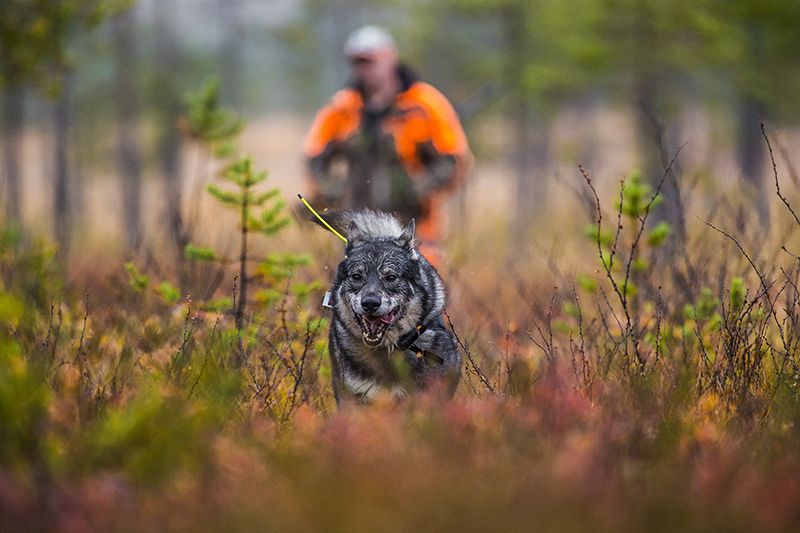
Shutterstock
Training of hunting dogs in
the wild on predators in their habitat
The worst is that EPA
has introduced even more vile techniques – namely that all hunters can train
their dogs one month before the official hunting starts! Even in areas of
Sweden where the licensed hunt will not be granted.
This means training on
wild bears (with their cubs) in their habitats begins from July-August (hunt
starts 21st August), on wolves in December (hunt starts 2nd
January) and lynx in February (hunt starts 1st March). It is also
permitted to train dogs on captured wild animals in special training centers.
This sadistic practice is not addressed by the EPA, even though many protests
are heard from NGO’s. Simultaneously hunting with dogs terrorizes other
wildlife, like hunting for boar that is permitted nearly all year round as well
as nighttime.
Sweden’s hunting lobby
is firming its grip on all wildlife and the legal system for hunting is rigged.
To spin the wheel of death the Swedish Environmental Protection Agency has
liberated hunting even more on all animals, including migrating birds like
cranes and swans with a renewed decree from 2021 to 2026! Be sure to watch the interview at https://www.mojostreaming.com/video/677/crisis-facing-wolves-in-scandinavia-a-panel-discussion
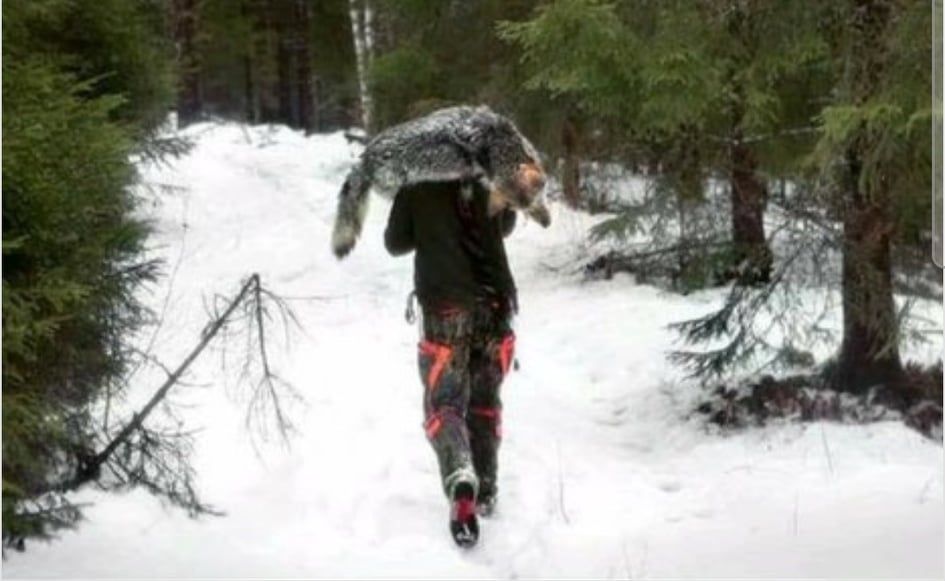
KA
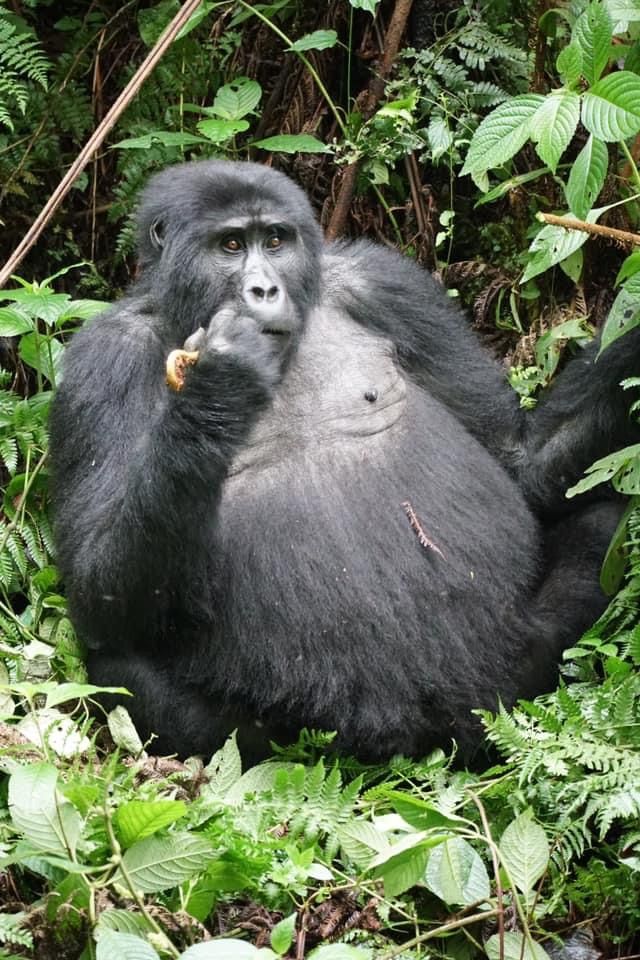 In this 3rd episode which is the last of my intended sharing is that I have total confidence and belief that we the young generation have the best chance as we have to change the way our people and the rest of the continent talks about and perceives conservation. We the now generation, are the best chance we have to ensure Africa and all its inhabitants animals,human or otherwise have a future. Can you imagine, the impact Kwame Nkuruma, Patrice Lumumba , Nelson Mandela and other renowned young Pan African leaders would have generated, if they had WhatsApp, Facebook, Twitter or Instagram? They were also young when they started their struggle for independence . Today’s young people is perhaps facing an even bigger challenge than the past generation were but we also have more power.
In this 3rd episode which is the last of my intended sharing is that I have total confidence and belief that we the young generation have the best chance as we have to change the way our people and the rest of the continent talks about and perceives conservation. We the now generation, are the best chance we have to ensure Africa and all its inhabitants animals,human or otherwise have a future. Can you imagine, the impact Kwame Nkuruma, Patrice Lumumba , Nelson Mandela and other renowned young Pan African leaders would have generated, if they had WhatsApp, Facebook, Twitter or Instagram? They were also young when they started their struggle for independence . Today’s young people is perhaps facing an even bigger challenge than the past generation were but we also have more power.
If there is one thing that I hope that the COVID-19 pandemic can teach us all, it is that the health of humans is one and the same as the health of nature and wildlife. When this pandemic is finally over, we cannot surely afford to return to “normal” and continue ignoring the destruction we have been causing in the name of development. And this is entirely up to the African youth, mojo live-streaming and the rest of the world to keep us all on the right path.
So you want to go mountain gorilla trekking ! It’s an awesome idea! We’ve been, and we can tell you that it’s definitely, absolutely, positively worth it. It's one of Our favorite things to do in Uganda . Standing just a few feet from these gentle giants in their forest habitat and seeing them munch on fruits and plants, play with or groom one another, and idly look at the curious bipeds looking at them – these are magical moments that stay with you for a lifetime. But to get to be in that special place, you first must decide where to go to see them. Do you want to go gorilla trekking in Rwanda? Or do you want to go gorilla trekking in Uganda? Well, answering that question is what this blog post is all about.
An adorable infant gorilla snacking on a shoot
Trekkers visit habituated mountain gorillas
The mountain gorillas that visitors trek to see are those that have become habituated to the presence of humans. The process of habituating them to humans takes about 2 (two) to 5 (five) years. But even though they become used to the presence of humans, there are still strict rules in place to ensure we interfere as little as possible with their habitat and way of life.
For starters, only one group of eight people is allowed to visit each gorilla troop per day, and then only for one hour. Other rules, as discussed in 20 things to worth knowing about mountain Gorilla Trekking include not making loud noises or sudden movements while in their presence.
Where can I go gorilla trekking?
All of the world's mountain gorillas live in the Virunga Mountains of Central and East Africa. The two main countries for gorilla trekking are Rwanda and Uganda. In Rwanda you can trek to see mountain gorillas in Volcanoes National Park. In Uganda, you can visit mountain gorillas in Bwindi Impenetrable National Park or Mgahinga National Park. The gorilla population in Mgahinga isn’t as large and steady as that of Bwindi, making the latter the better and more popular option.
The decision to go gorilla trekking in Rwanda or Uganda usually rests on factors like cost and accessibility. You also want to consider what else you’ll do on your trip to the country, as the cost and effort of a gorilla trek means you’ll likely only be seeing gorillas on one day. We discuss all these matters in just a moment, but first, let’s answer a very important question .
The mountain gorillas of Rwanda
Rwanda is a small and mountainous East African country with a population of around 14 million people. It’s sometimes called the pays des mille collines, which is French for ‘land of a thousand hills’. The main language in the country is Kinyarwanda, spoken by most citizens. English, French and Swahili are also official languages.
Rwanda is a phoenix of the twenty-first century, having risen out of the ashes of its tragic 1994 genocide to become one of Africa’s great success stories. It’s capital city of Kigali is well-known for its beauty and cleanliness. In fact, did you know that’s illegal to buy, use or sell plastic bags in Rwanda?
Volcanoes National Park
Tourism has played a major role in helping Rwanda to rebuild itself, and mountain gorillas are at the heart of its tourism trade. As mentioned, Rwanda’s mountain gorillas live in Volcanoes National Park. There are about 56 mountain gorilla troops in the park.
As Rwanda is a small country, getting to Volcanoes National Park is a relatively easy affair. Visitors simply fly into Kigali International Airport and then it’s a short drive of about two and a half hours northwest to arrive at the doorstep of Volcanoes National Park. Even though the drive is short, it’s always advisable to travel with a reputable tour operator who knows the region and roads well. The proximity of Volcanoes National Park to an international airport is a major draw for Rwanda’s mountain gorilla tourism industry.
Gorillas are social animals who live in troops their whole lives
The mountain gorillas of Uganda
Uganda is a landlocked country consisting of massive plains, volcanoes, snow-capped mountains, thick forests, savannah, immense lakes, diverse wildlife and more. The population of about 45 million is extremely diverse, and speak more than 50 languages. Ugandans are known for their warmth and friendliness. It’s also important to note that Uganda is considered to be the best English speaking country in the whole of Africa, which is very helpful for tourists.
Bwindi Impenetrable National Park
Most of Uganda’s mountain gorillas live in Bwindi Impenetrable National park. Bwindi is an alpine forest that sits between 1,160 m meters and 2,607 meters above the sea level. As the name suggests, the Bwindi Impenetrable National Park encompasses a thickly forested area. Given the density of vegetation, it can be pretty dark in the forest. It’s a UNESCO World Heritage Site, and rightly so.
If you look at the map of Uganda below, you can see that Bwindi Impenetrable National Park is in the extreme southwest corner of Uganda. This places it decently far from the capital city of Kampala and Entebbe International Airport, both of which are in south central Uganda. Moreover, the roads connecting the two aren’t smooth, open highway. So the drive takes about nine hours. It’s advisable that you travel with someone who knows the region rather than road tripping on your own.
Map showing tourist attractions in Uganda
While you can take a short flight from Entebbe to Bwindi, driving is a cheaper option, especially as part of a tour group. Some who want to go to Bwindi for gorilla trekking actually choose to fly into Kigali, Rwanda’s capital city, and drive north across the border, as this is a shorter drive that lasts about four hours.
It takes longer to reach Uganda's Bwindi Impenetrable National Park than it does to reach Rwanda's Volcanoes National Park.
Get your free Uganda guide!
Everything you need to know about Uganda .
Trekking prices in Rwanda and Uganda
The first major difference is the price of the gorilla trekking permits in Uganda and Rwanda. Rwanda chose to implement a low tourist policy with high impact, so they charge $1,500 for a gorilla trekking permit. Uganda on the other hand chose to set its permit price at $700 for a gorilla trekking permit. This makes trekking to see the Mountain gorillas in Uganda much cheaper. There are many more luxury lodge options in Rwanda than Uganda, but there are a range of mid-range and luxury accommodations in Uganda too.
Accessibility of gorilla parks in Rwanda and Uganda
Given the relatively close proximity of Volcanoes National Park to Kigali Airport, Rwanda is the better country for visitors who only have time for a brief stopover to go gorilla trekking, and nothing else. This is more likely to be the case for those in transit to somewhere else, or travelling in from a nearby country.
For most foreign travellers, however, the time and expense put into getting to East Africa means they want to do more activities while in the region, like go on safari or climb Kilimanjaro. For such travellers, Uganda is the better option as it has more to offer. But more on that in a moment.
Trek conditions in Uganda and Rwanda
Trekking routes in Rwanda are considered a bit more open and not as steep and slippery compared to Bwindi In Uganda. That said, Volcanoes National Park is at a much higher altitude than Bwindi and this can also make the trek more challenging.
Uganda has more habituated mountain gorilla troops
Note too that while it’s easier to reach Rwanda’s mountain gorillas, Uganda has more habituated mountain gorillas and so admits more trekkers per day. About 80 people a day are allowed to visit Uganda’s gorillas. In Rwanda, the number of daily visitors is about 56. This makes obtaining a gorilla trekking permit in Uganda a little easier than obtaining one in Rwanda, especially if you aren't booking very far in advance. Read about our http://interiorsafarisea.com/experiences/
Trekkers get close enough to look into the eyes of the mountain gorillas
“I just came back from an amazing 14-days trip to Uganda with Follow Alice, and I strongly recommend them. This was my second experience with Follow Alice, and just like the first trip, everything was flawless.
Gorilla habituation permits in Uganda
Something on offer only in Uganda is the gorilla habituation permit. This permit allows the visitor to spend fourhours with a mountain gorilla troop in the south of Bwindi Impenetrable National Park. The habituation permits costs $1,500, which is the same price as the one-hour gorilla trekking permit in Rwanda.
The habituation permit was introduced only recently in response to visitors’ desire to spend more time with the mountain gorillas. Only two gorilla troops have been set aside for these habituation experiences. This means about eight habituation permits are issued per day, so you have to book well in advance if you want one.
Visitors who do the four-hour gorilla trek get to take part in habituation activities, like making calls, collecting specimens, and even sometimes naming the individual gorillas. It’s a truly special, once-in-a-lifetime adventure.
Gorilla trekking with Interior Safaris East Africa.
For all the reasons discussed above, we at Interior Safaris East Africa recommend gorilla trekking in Uganda rather than Rwanda. Check out our suggested http://interiorsafarisea.com/package/10-days-uganda-gorilla-wildlife-safari/
which of course includes gorilla trekking in Bwindi Impenetrable National Park. You can also read through the reviews to see what our past clients thought of the experience. Please note this is a flexible itinerary – we're happy to lengthen or shorten it. We can also switch things up to suit your preferences and needs. We also find that some clients like to bundle a Tanzania safari or Kilimanjaro climb with their gorilla trekking adventure while they're in the region.
"Godfrey exudes positivity, confidence, and really was the reason we fell for this colourful, emerging location. He made us feel safe and has a passion for animals. And he loves his country and has interesting insights on its current affairs.”
Godfrey is our passionate, energetic and knowledgeable local guide
Ready to take the plunge?
If you're ready to explore Uganda Rwanda Tanzania and go gorilla trekking, or you just have some questions you'd like answered, press that pink button below and let's start chatting! http://interiorsafarisea.com/contact/
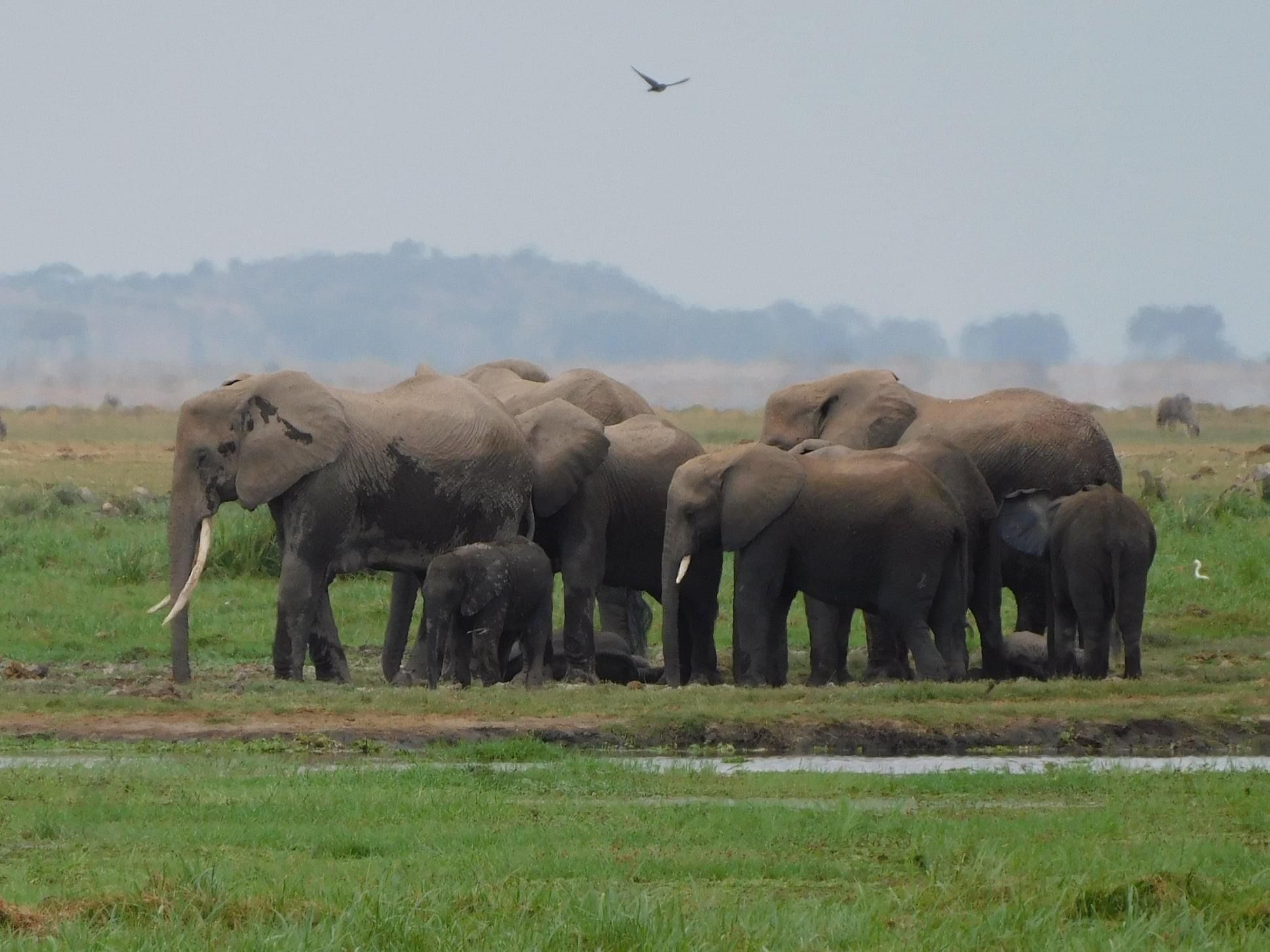
In the second episode of this campaign am saying that Africans can only truly understand this, if they are exposed to content underlining the importance of biodiversity and conservation frequently.
It is no secret that television programmes, newspaper articles and social media determine what we talk about in our homes, workplaces and local eateries. We are what we watch and read.
This is why it is high time both mojo live streaming and the media, traditional and social-steps up to their role of setting the agenda and turns its focus to what really matters, the environment. The people who have the ability to reach millions of Africans on a daily basis and shape the narratives in the African households also wield the power to ensure that wildlife thrives in modern Africa.
I know that this content exists, but we need to see more of it. If Africans begin to see more content on nature and wildlife, the conversation will definitely begin to change. Especially if other Africans, who are equally invested in the wellbeing and the development of the continent, tell them conservation is important.
Today, young Africans, who stand to lose the most as a result of nature’s destruction, dominate the media both social and traditional on the continent. We are members of the most educated generation Africa has ever had. We travelled more than our parents ever did and the internet has opened the world to us in ways that previous generations could not even dream of. We are innovative, technologically savvy, and even braver than the generations that liberated us from colonialism.
To be continued next week…..
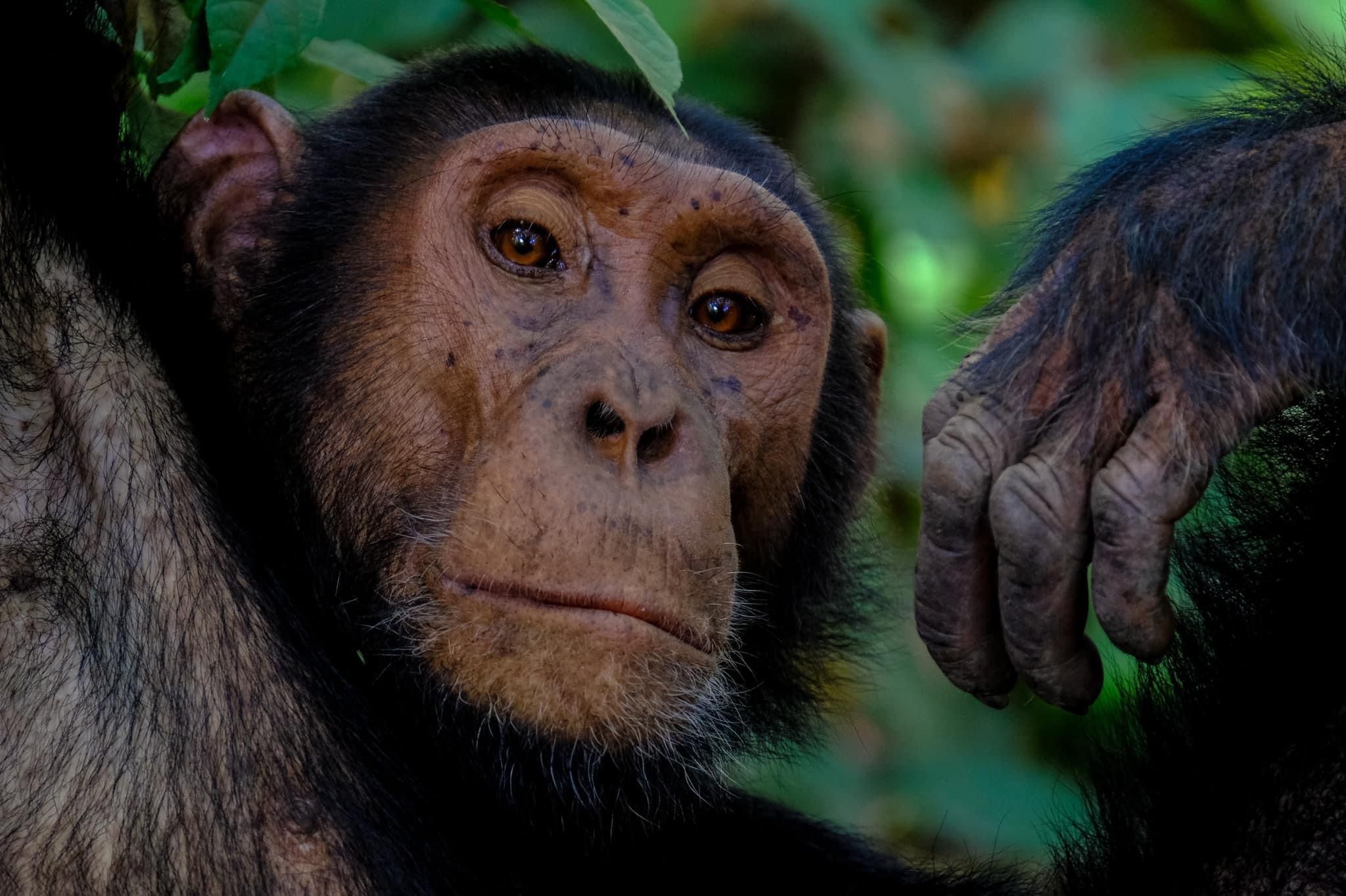 On my today’s thoughts i will talking about Africa in relation to conservation. Well In Africa, the conservation story has long been told from an external perspective, the perspective of science, and the West. The African people , cultures, heritage, knowledge and aspirations have only been a small part of the conversation, an afterthought. Together with mojo live streaming, We need to change this, and reclaim our role in the fight to save the planet and the future of Animals and humans.
On my today’s thoughts i will talking about Africa in relation to conservation. Well In Africa, the conservation story has long been told from an external perspective, the perspective of science, and the West. The African people , cultures, heritage, knowledge and aspirations have only been a small part of the conversation, an afterthought. Together with mojo live streaming, We need to change this, and reclaim our role in the fight to save the planet and the future of Animals and humans.
Africa’s human population is expected to double by 2050.
That would be approximately 2.5 billion people, meaning more than a quarter of the world’s people will be in Africa. And almost 70 percent of Africans will be under the age of 40. This will undoubtedly add to the momentum of the continent’s development.
But on the other hand, nature is already being destroyed at unprecedented rates in Africa in the name of development. The way we produce and consume food and energy, coupled with the blatant disregard for the environment entrenched in our economic system, have already brought the natural world of the continent to a breaking point. A rapid increase in population is likely to speed up this destruction.
However, together with mojo live streaming, it is still possible to build a future in which the continent’s biodiversity is protected, under which its people are fed, industries are running, and its economies are sustainable and prosperous.
To achieve this, we need to make conservation a primary concern for all Africans and the rest of the world And perhaps more importantly,
we (AFRICANS) need to realise that we are not the only Africans. For me it would be arrogant for us to think that other species sharing this continent with us should pay the price for our development.
Mountain Gorillas,Giraffes, for example, are only found in Africa, and therefore, they are as African as we are. They have a right to exist as much as we do. And their survival is tied to our survival.
To be continued in my next episode……